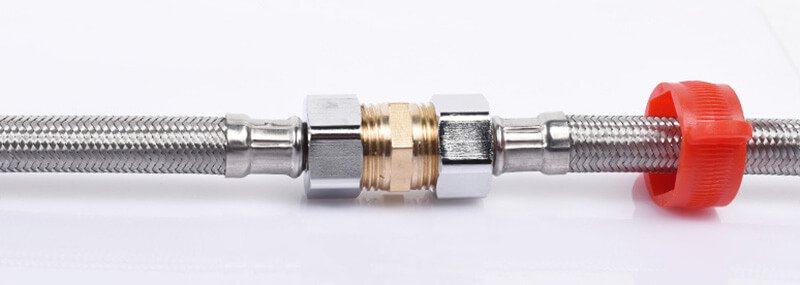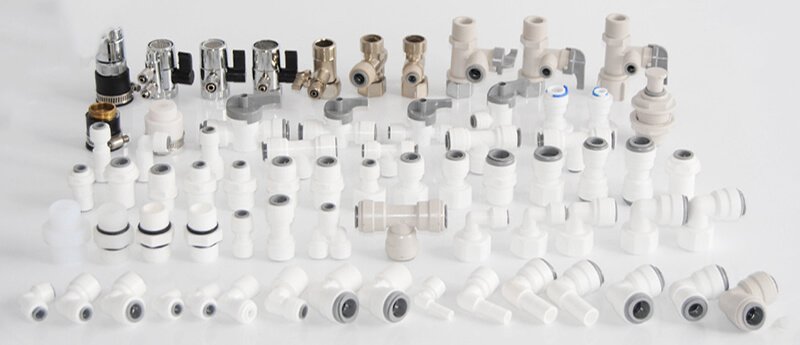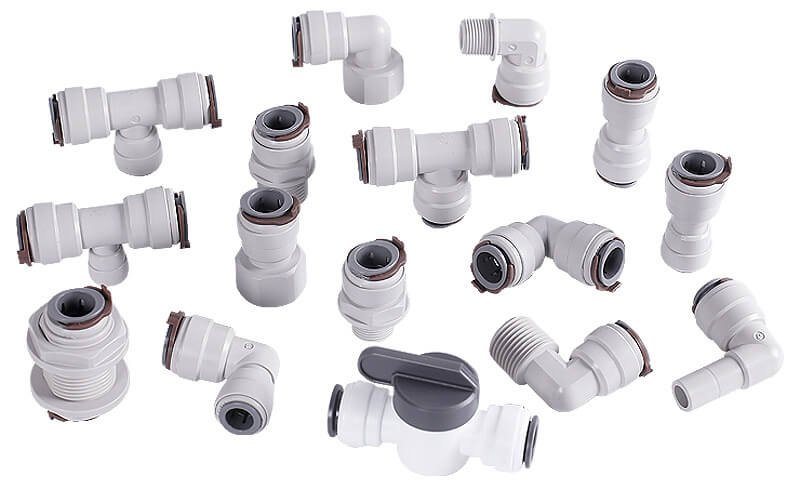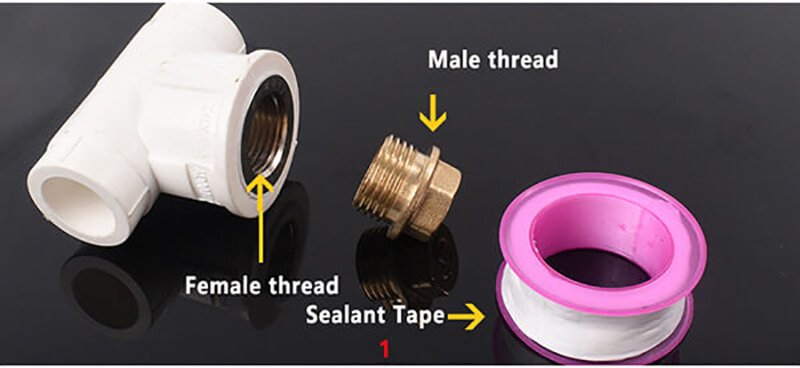Water filtration systems play a crucial role in providing clean and safe drinking water for homes and businesses. However, even the most efficient filtration system can become ineffective if there are leaks in the connections. Leaks not only waste water but can also cause significant damage to plumbing, create unsanitary conditions, and reduce the overall performance of the filtration system.
In this article, we will explore the common causes of leaks, the types of connectors used in filtration systems, and practical tips for ensuring secure, leak-free connections.
the Components of Water Filtration Systems
A typical water filtration system consists of several essential components that work together to purify water. Each part plays a role in ensuring that the system runs efficiently without any leaks or issues. Let’s take a closer look at these components.
Key Components of a Water Filtration System
- Filters: The heart of any filtration system. These remove contaminants from the water, improving taste and ensuring safety.
- Connectors: These are the fittings that join various parts of the system together. Proper connectors are crucial for leak prevention.
- Pipes and Tubing: These direct water through the filtration system. The material and quality of the pipes can affect the overall integrity of the system.
- Valves: Used to control the water flow within the system. They can also prevent water from flowing when the system is not in use.
The Role of Connectors
Connectors are among the most important components in a filtration system because they are responsible for joining different sections of pipes and ensuring a tight seal. Without the right connectors or proper installation, even the most advanced filtration system will leak.
Connectors come in various shapes and sizes, including compression fittings, push-fit connectors, and quick-connect fittings, all of which are designed to provide secure connections. Each type has specific features that make them ideal for different parts of the system.
Seals and gaskets also play a significant role in ensuring connectors are leak-free. A worn-out or damaged seal can result in water escaping from the system, causing inefficiency and possible damage.

Common Causes of Leaks in Water Filtration Systems
Leaks in water filtration systems are a common problem, and they can happen for a variety of reasons. Understanding the root causes can help you avoid or quickly resolve these issues. Let’s explore some of the most common reasons for leaks in water filtration systems.
1. Improper Installation
One of the most frequent causes of leaks is incorrect installation. Whether it’s over-tightening or under-tightening the connectors, improper handling can lead to gaps in the connections where water can escape.
- Over-tightening can crack or damage connectors and seals, leading to leaks.
- Under-tightening leaves the connection loose, making it easier for water to seep out.
To prevent installation issues, always follow the manufacturer’s guidelines and ensure connectors are fitted properly.
2. Worn-Out Seals and Gaskets
Seals and gaskets play a critical role in keeping connections airtight. Over time, however, these parts can deteriorate due to constant exposure to water and pressure. A worn-out seal is one of the most common causes of leaks.
- Rubber gaskets can harden, crack, or lose their elasticity, allowing water to leak through.
- Seals may also fail after prolonged use, especially if they are exposed to harsh conditions or chemicals.
Regularly inspecting and replacing worn-out seals is essential to maintain leak-free connections.
3. Faulty or Mismatched Connectors
Using incorrect connectors that don’t match the size or material of the pipes can create weak points in the system. For instance, plastic connectors on metal pipes or mismatched thread types can lead to gaps, causing leaks.
- Thread mismatches between connectors and pipes can result in water escaping through the threads.
- Incorrect material choices can cause connectors to degrade or crack under pressure.
Always ensure that the connectors you use are compatible with both the pipe material and size to prevent leaks.
4. Cracked Pipes or Connectors
Cracks in the pipes or connectors themselves are another common cause of leaks. This can occur due to wear and tear, extreme temperature fluctuations, or poor-quality materials.
- Old pipes or connectors can crack under the pressure of water flow.
- Cheap, low-quality materials are more prone to damage and cracking, especially over time.
To prevent this, invest in high-quality materials and replace any cracked components as soon as they are detected.
5. Poor-Quality Materials
Using low-quality connectors, seals, and pipes is a sure way to invite leaks into your filtration system. Materials that are not built to withstand constant water pressure, chemical exposure, or temperature fluctuations are prone to failure.
- Cheap plastic parts can warp or crack easily, especially in systems with high water pressure.
- Low-grade rubber seals may not provide a durable seal, leading to leaks.
Investing in high-quality, durable materials will save you money and effort in the long run by reducing the chances of leaks.
Types of Water Filtration Connectors and Their Role in Leak Prevention
Choosing the right connectors for your water filtration system is essential to prevent leaks and ensure the system functions efficiently. Connectors not only join the various components together but also play a critical role in providing a secure, leak-free seal. Let’s explore the most common types of water filtration connectors and how they help in leak prevention.
1. Compression Fittings
Compression fittings are one of the most commonly used types of connectors in water filtration systems. These fittings work by compressing a ferrule (a metal ring) around the pipe, creating a tight seal when tightened.
- Leak Prevention: The compression process ensures a strong seal between the pipe and the connector. When installed correctly, compression fittings are very reliable at preventing leaks.
- Best Use: Ideal for situations where pipes need to be joined securely without using glue or solder.
Compression fittings are especially useful for metal pipes, as they can withstand high pressures and provide a durable, leak-free connection.
2. Push-Fit Connectors
Push-fit connectors are designed for quick and easy installation. As the name suggests, these connectors allow you to simply push the pipe into the fitting, where an internal mechanism locks the pipe in place.
- Leak Prevention: Push-fit connectors are designed with rubber O-rings inside to create a watertight seal. Once the pipe is pushed into the fitting, it is securely held in place, reducing the chance of leaks.
- Best Use: Perfect for DIY installations or when quick, tool-free connections are required.
While push-fit connectors are easy to install, it’s important to ensure the pipe is fully inserted to avoid leaks. Always check that the pipe is fully engaged in the connector before use.
3. Quick-Connect Fittings
Quick-connect fittings are similar to push-fit connectors but offer the added benefit of being easily disconnected without needing special tools. These are often used in systems where frequent disconnections are necessary, such as in refrigerator water lines or portable filtration systems.
- Leak Prevention: Quick-connect fittings use a locking mechanism to hold the pipe firmly in place, ensuring a secure connection that prevents leaks. The internal O-ring or gasket adds an extra layer of protection.
- Best Use: Ideal for applications that require periodic disconnection and reconnection of water lines, such as water filters or refrigerators.
Quick-connect fittings are both convenient and leak-resistant when properly installed, though it’s important to ensure the lock is fully engaged when connecting and disconnecting.
4. Barb and Hose Clamps
Barb fittings are simple connectors with a barbed end that allows flexible tubing to be pushed onto them. A hose clamp is then used to secure the tubing to the barb, ensuring a tight seal.
- Leak Prevention: The barb’s design helps grip the tubing, while the hose clamp ensures the tubing is securely held in place. This combination creates a reliable seal that prevents leaks.
- Best Use: Ideal for flexible tubing connections, commonly found in low-pressure applications like under-sink filtration systems.
While barb and hose clamp fittings are effective, it’s crucial to use the correct size tubing and clamp to ensure a proper fit and avoid leaks.

Tips for Ensuring Leak-Free Connections
Ensuring leak-free connections in water filtration systems requires attention to detail during installation, regular maintenance, and proper use of the right materials. Here are some essential tips to help you maintain a secure, leak-free system.
1. Ensure Proper Sizing and Compatibility
One of the most important steps in preventing leaks is ensuring that all connectors and components are the correct size and type for your pipes.
- Check the size: Always verify the diameter of the pipes and connectors before installation. Mismatched sizes are a common cause of leaks.
- Material compatibility: Ensure that the material of the connector matches the material of the pipe (e.g., plastic to plastic, metal to metal). Using mismatched materials can lead to poor seals and eventual leaks.
By double-checking sizes and material types, you ensure that all parts fit together snugly, reducing the likelihood of leaks.
2. Use the Right Installation Techniques
Proper installation is key to a leak-free connection. Even the best-quality parts won’t perform well if not installed correctly.
- Tighten connections properly: Whether using compression fittings or push-fit connectors, ensure they are tightened enough to create a solid seal, but avoid over-tightening, which could cause damage.
- Follow manufacturer instructions: Always refer to the installation guide provided by the manufacturer for each component. These instructions are designed to ensure that the connections are made correctly and securely.
Taking the time to install everything correctly will go a long way in preventing leaks from the start.
3. Regularly Inspect and Maintain the System
Leaks can develop over time, so regular maintenance and inspections are crucial to ensure the longevity of your filtration system.
- Inspect seals and gaskets: Check for signs of wear and tear, such as cracks, stiffness, or discoloration, and replace any damaged seals or gaskets immediately.
- Look for loose connections: Periodically check all connections to ensure they are still tight. Tighten them if necessary to maintain a proper seal.
- Flush the system: Regularly flush your filtration system to prevent buildup that can put pressure on connectors and lead to leaks.
Maintaining the system and replacing worn-out parts will help prevent future leaks and keep the system functioning at its best.
4. Use Teflon Tape or Pipe Sealant When Needed
In some cases, adding Teflon tape or pipe sealant to threaded connections can help provide an extra layer of protection against leaks.
- Apply Teflon tape: Wrap a small amount of Teflon tape around the threads of connectors before screwing them in. This helps create a tighter seal and reduces the chances of water escaping through the threads.
- Use pipe sealant: For additional sealing power, apply pipe sealant to threaded connections to prevent leaks, especially in high-pressure systems.
These materials add an extra level of security, especially in areas where threads might not perfectly align.
5. Avoid Over-tightening
While it’s important to tighten connectors to create a secure seal, over-tightening can actually cause more harm than good.
- Damage to connectors: Over-tightening can crack or deform connectors, causing leaks.
- Strain on seals: Applying excessive pressure can cause seals to wear out prematurely, leading to leaks.
Always tighten connectors to the recommended level—just enough to create a tight seal without causing damage.
6. Use High-Quality Parts
Investing in high-quality connectors, seals, and pipes will pay off in the long run by reducing the chances of leaks and system failure.
- Durable materials: Choose connectors made of stainless steel, brass, or high-quality FDA-approved plastic, which are more resistant to damage and wear.
- Reputable brands: Stick to trusted manufacturers known for their reliable and durable parts.
Quality parts provide a more reliable, long-lasting solution, minimizing the need for repairs and preventing leaks over time.
How to Troubleshoot and Fix Leaks
Even with the best installation and maintenance practices, leaks can still occur over time. The good news is that most leaks are fixable with a little troubleshooting. Here’s a step-by-step guide to help you identify the source of the leak and fix it effectively.
1. Identify the Source of the Leak
The first step in fixing a leak is to locate the source. This can sometimes be tricky, as water can travel along pipes and drip in unexpected places. Here’s how to identify the leak:
- Visual inspection: Look for water stains, drips, or damp areas around the system, especially near connectors, pipes, and seals.
- Pressurized system: If the system is under pressure (e.g., a high-flow filtration system), listen for hissing sounds that may indicate a leak.
- Check for pooling water: Any standing water around the system is a sign of leakage, and it can help you pinpoint the affected area.
Once you find the source of the leak, it will be easier to address the issue.
2. Tighten Loose Connections
Loose connections are a common cause of leaks, and they can often be easily fixed by tightening the affected connector.
- Turn off the water supply before making any adjustments to avoid further leakage.
- Use the appropriate tool (e.g., wrench or hand-tightening) to gently tighten any loose connectors.
- Be careful not to over-tighten, as this could cause damage to the connector or pipe.
After tightening, check the area again to see if the leak has stopped.
3. Replace Worn-Out Seals or Gaskets
If tightening the connectors doesn’t solve the problem, the issue could be due to worn-out seals or gaskets. Over time, these parts can crack, shrink, or lose their elasticity, which compromises their ability to create a tight seal.
- Turn off the water and disassemble the connection to access the seal or gasket.
- Inspect the seal or gasket for visible signs of wear, such as cracks or hardening.
- Replace the damaged seal or gasket with a new, high-quality replacement.
Be sure to select the correct size and material for the replacement seal to ensure it fits properly and provides a secure seal.
4. Check for Cracks in Pipes or Connectors
If tightening the connectors and replacing seals doesn’t resolve the leak, it’s possible that the pipe or connector itself is cracked. Cracks can occur over time due to pressure, extreme temperatures, or poor-quality materials.
- Inspect the pipes and connectors for visible cracks or damage.
- If the crack is small, you may be able to seal it temporarily using plumber’s tape or epoxy resin.
- If the crack is large or located in a critical area, you will need to replace the damaged pipe or connector entirely.
Replacing cracked parts is essential to restoring the integrity of the system and preventing further leaks.
5. Reapply Teflon Tape or Pipe Sealant
In some cases, leaks can occur around threaded connections. To fix this, you can apply Teflon tape or pipe sealant to the threads to improve the seal.
- Turn off the water supply and disassemble the connection.
- Clean the threads thoroughly to remove any debris or old sealant.
- Wrap Teflon tape around the threads of the connector or apply pipe sealant to the threads.
- Reassemble the connection and tighten it properly.
This added layer of sealant can often prevent leaks in threaded connections.
6. Test the System After Repairs
After addressing the leak, it’s important to test the system to ensure the problem has been fixed.
- Turn the water supply back on and check the system for any signs of new leaks.
- Inspect the areas where repairs were made, as well as any other potential weak points.
- Allow the system to run for a while to ensure the connections hold and that no additional leaks develop.
Testing the system ensures that your repairs were successful and that the filtration system is back to working properly.

Choosing Quality Water Filtration Connectors and Materials
Selecting the right connectors and materials is a critical step in ensuring a leak-free and reliable water filtration system. The quality of the components directly impacts the performance, durability, and safety of your filtration system. Here’s what to consider when choosing connectors and materials:
1. Opt for Durable Materials
The materials used in your connectors and pipes should be durable and able to withstand constant exposure to water, pressure, and varying temperatures.
- Stainless steel: Known for its strength and corrosion resistance, stainless steel connectors are a great choice for long-lasting, leak-free connections.
- Brass: Brass connectors are also durable and resistant to corrosion, making them suitable for high-pressure systems.
- FDA-approved plastics: High-quality plastic connectors, such as those made from polyethylene or PVC, are ideal for low-pressure systems and are often more affordable.
Choosing high-quality materials ensures that your connectors will last longer and maintain their integrity under the pressure of daily use.
2. Choose the Right Connector Type
Each type of connector serves a specific purpose, so it’s important to choose the one that best suits your system’s needs.
- Compression fittings are ideal for metal pipes and high-pressure applications, offering a secure, tight seal.
- Push-fit connectors are great for DIY installations and flexible piping, providing quick, tool-free connections.
- Barb fittings are commonly used for flexible tubing, where secure and leak-free connections are needed in low-pressure applications.
By selecting the right type of connector, you can ensure a secure and leak-free seal in your filtration system.
3. Consider the Manufacturer’s Reputation
The quality of connectors and materials can vary greatly depending on the manufacturer. Always opt for products from reputable brands known for producing reliable, high-quality components. Look for manufacturers with positive reviews and a history of durable products.
While quality components may cost more initially, they save you time and money in the long run by reducing the need for frequent repairs or replacements.
Conclusion
Ensuring leak-free connections in your water filtration system is essential for maintaining both the efficiency and longevity of the system. By understanding the components of the system, identifying common causes of leaks, and following best practices for installation and maintenance, you can significantly reduce the risk of leaks and water damage.
In this article, we’ve covered:
- The types of connectors available and their role in preventing leaks.
- Practical tips for ensuring leak-free connections, such as proper sizing, installation, and regular maintenance.
- How to troubleshoot and fix leaks if they occur, as well as how to choose high-quality connectors and materials for a reliable, long-lasting filtration system.
Remember, investing in quality components and taking proactive measures will not only help you avoid leaks but will also ensure that your water filtration system performs efficiently for years to come.


